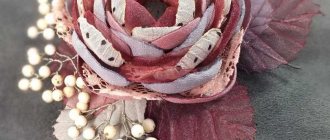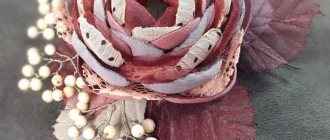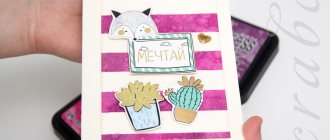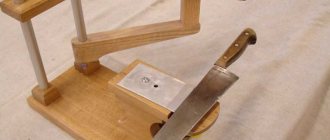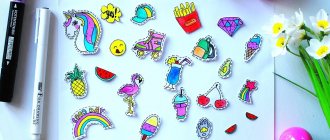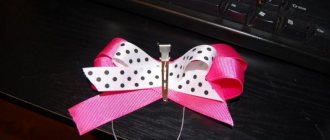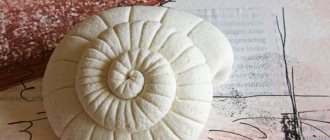Pottery is an invention of mankind, which has proven its versatility and usefulness for many thousands of years. Along with the invention of the wheel or, for example, the spoon, it can be considered a discovery of genius in its simplicity. The love for ceramics has not faded over time. Ceramic pots, vases, plates, as well as tea sets, candlesticks, whistles and even musical instruments - all this can be made yourself from living natural material, clay. Read here how to do it.
What is ceramics made from and where to get materials for work
Making pottery is such an attractive activity in appearance that many people without special artistic skills simply try pottery and find it difficult to stop. But the path of a ceramist is not easy: the hobby is not the cheapest, requiring perseverance, concentration, and a willingness to try and try again.
Making ceramics is working with clay. The material will be the basis of your activity if, for example, you have “played enough” with polymer clay and want to try real, natural clay. A ceramist cannot do without a potter's wheel and a kiln: both cost not a penny. You will try to bake your first works in the oven, but when your hand gets stronger, you will think about professional equipment.
Where can I get all this? You rarely have to extract clay yourself; ready-made material can be purchased in materials for creativity and crafts. If the process is frequent, start ordering directly from the supplier. A pottery wheel is also easy to find - specialized stores have them of varying prices and quality. Muffle kilns, in which dishes or decorations are fired, are expensive. But if you value your interest in pottery highly, it brings you pleasure, and you decide to make money from it, you will have to find money.
A little tip: you can try it on a set for a beginner ceramist (for children). A potter's wheel and clay are included, an oven or kiln will “help” with firing, and you will understand whether you should take more serious steps regarding ceramics.
Is it possible to add decorations?
Yes, you can! There are several ways to decorate clay products:
- Stamps with counter-relief. They can be found in specialized stores. Use them on slightly damp clay to make markings that are great for patterns or even "signatures".
- Tools: Forks, knives, needles, combs or the like can create amazing designs and textures that your pottery will benefit from.
- Imprints: leaves, stones, branches or similar. Press them gently into the clay to create an impression before firing or drying the piece.
The decoration really looks good, and unless you are creating pottery that requires glazing, these little decorations will make your pottery even more attractive.
Techniques for working with clay by hand
The technique of work is the basis, without mastering which no beginner will advance further. For some reason, many beginning ceramists want to sit down at a pottery wheel at their first lesson, even though their training begins with modeling.
Modeling
For many centuries, masters who worked with clay tried to improve existing techniques and methods. What’s interesting is that most of the skills that a ceramist has were invented a long time ago and have changed little.
Traditional sculpting methods involve:
- hand-sculpted from a single piece of material;
- tape-tow technology;
- plastic (textile equipment);
- kneading into the finished form;
- casting them in plaster mold;
- drawing an object on a potter's wheel.
Hand sculpting does not conflict with drawing on a circle! Yes, it arose before its invention, but did not stop developing with its use. And a huge number of craftsmen around the world continue to make clay products by hand. First, practice on plasticine: this will help you understand whether your hands like this kind of work, whether you are ready to do it for hours, and wait patiently for the result.
Potter's wheel
It was not invented by chance, since, unlike modeling, it allowed the production of clay products to flow - that is, it significantly accelerated the process of making ceramics. The pottery wheel requires the right approach: it is like a musical instrument that needs to be mastered. Positioning your hands correctly and feeling confident in them are important technical points.
Cooldown
Beginning ceramists dwell on this technique in detail, since it is simple and understandable, while being illustrative. Soft clay is poured into a plaster mold: it hardens, and the finished product is taken out of the mold. Why gypsum? It has one very attractive feature - it is able to absorb excess moisture, and the product hardens and dries out.
Casting
In casting, molds are also used, but different ones. The diluted material is poured over them, the blanks are thoroughly dried, taken out and started to paint. The craft will acquire strength only after firing: it is impossible to make pottery with your own hands without exposure to temperature.
Reason 4: quality
A fairly common story: you bought beautiful dishes from an online store, but they turned out to be of poor quality. The bright pattern on the mug began to peel off after washing, and knife marks appeared on the plates. When producing your own dishes, especially in a ceramic workshop under the supervision of a master, such excesses are excluded. First of all, you will be taught how to handle clay correctly and will be explained the sequence of the technological process that will make your dishes high-quality and practical. So you can put it in the microwave and wash it in the dishwasher without any problems. There is no risk of cracks or peeling paint.
Materials and tools
Start with simple and inexpensive ones; as your hobby develops, the requirements for them will increase.
Tools
Of course, the main tool is the hands of a ceramist, but despite all the poetry of what has been said, one cannot do without quite prosaic tools.
The work requires:
- Potter's wheel,
- string,
- needles or awl,
- pottery combs and stacks.
There are a huge number of variations of the latter; don’t become overgrown with them until you feel confident in your hands and ready to continue working on ceramics.
Where and what kind of clay to get
It’s easier to buy the material in a specialized store, or you can make it yourself. But walking along the slopes of ravines and quarries in search of raw materials is not for everyone, so the option with a store is preferable. Buy pottery clays - plastic, different colors, which are suitable for both hand modeling and working on a wheel. There are enough impurities in this clay; due to the impurities, it acquires its characteristic colors and plasticity.
How to prepare for work
Dry clay is dissolved with clean water in a clean container: it is easier to do this in an enamel basin. If, in addition to the powder, you have dried lumps of clay, you can soak them and use them again. The clay is poured with a large amount of water, mixed, and infused. After this, the composition needs to be kneaded, and it is ready for use.
Foreign bodies are removed from the material by denting. The crushed clay is wrinkled and broken several times: this way you can avoid voids and unnoticed foreign bodies. Working clay dough is elastic and homogeneous.
Video material
Well. Now all doubts about needlework have disappeared? Still would. Making dishes from clay is not only profitable, but fun! No one will stop you from making money from this or simply pleasing yourself, your friends and your loved ones. The best thing is that this activity does not require any special investments, except for one thing - the soul! By putting your soul into the process, you will experience indescribable delight when you drink tea from a saucer that you made yourself. Creative success to you!
Technology of working with clay manually
Initially, the clay needs to be kneaded - you need to press on a piece of material with your hands and fingers. Then the ceramist learns how to pinch off correctly: first, a piece is pinched, then torn off. To make the clay flat, you need to learn how to flatten it with your fingers; large pieces are pressed with your palm to the surface.
Rolling clay allows you to form balls, rolling creates flagella, cutting is dividing a piece into a stack, sharpening is pulling a piece with your finger to give it sharpness. When making a clay product, the master works with two hands; he always uses tools (remove excess, make small parts, attach, smooth, etc.). During the sculpting process, the product is constantly inspected for proportions and symmetry.
Reason 5: saving the family budget
If you haven’t decided to produce a whole set, but just for fun, you’ve attended an introductory course on ceramics and made a couple of mugs, then even this knowledge will be enough for you to begin to understand tableware, types of clay and glazes, and the artist’s skill. If suddenly in a store a saleswoman begins to assure you that a pair of coffee costs 20,000 rubles because it is rare blue clay, then you can safely clarify whether it is natural or just an artificial color (a pigment mixed into ordinary white clay)? Dyed clay carries no value and you are paying solely for the brand. Expensive ceramics stores also like to use stamping. This means that the shape of the products is not unique: the patterns that are applied to them can simply be printed, and not drawn by the master. It’s another matter if you see on a market somewhere in the mountains of Andalusia a designer jug made of expensive materials, unique in shape and painted. You will immediately understand how much work the master has put into it and why it costs a decent amount. By the way, if the author of this work of art is suddenly exhibited in some gallery or museum of modern art, then the purchased jug can also be sold at a profit to collectors.
How to make a clay plate with your own hands, step-by-step instructions
And now step by step about how pottery is made.
To make your own plate, you need: kneaded clay, a rolling pin, a cup of water, a wooden spatula, a sheet of paper and a flat surface. Knead the clay until it does not stick to your hands: it should be elastic and pliable.
The plate is made like this:
1. Roll a ball with a diameter of 8 cm. Make a depression in its center.
2. Gently press the indentation with your fingers: the ball rotates clockwise. Each movement stretches and enlarges the ball. Place the workpiece on a sheet of paper: this makes it convenient to rotate it. You will end up with something like a bowl, which can be given the desired shape.
3. Use a wooden spatula to form smooth edges (if you don’t have a spatula, just wet your fingers with water). Rotate the sheet in a circle, and a spatula or fingers applied perpendicularly will work for alignment.
4. Wet your fingers with water and smooth the inside of the product.
The plate is molded! The first test may be far from ideal, but only with experience the plates will become smoother and more pleasing to the eye.
How to make ceramics at home
How to work with ceramics in such a limited space? It's actually quite simple, and we'll talk about how you can use different techniques depending on the environment you're working in.
First let's talk about creating a clay mold, for this we'll start with the following:
- Take clay and roll it out.
- Cut to desired length and width.
- If using sculpting, roll the clay into a ball shape.
- Select a technique for further work.
If you create ceramics without a potter's wheel, then it is hand sculpted. Hand sculpting is, in our opinion, the best way to make ceramics because it is simple and requires fewer materials.
Let's look at three hand sculpting techniques:
- Modeling from clay plates
- Spiral molding
- Modeling from a whole piece of clay
You can start by sculpting with clay plates. For this:
- Roll out the clay.
- Cut it to your desired length/width/height.
- Set aside and repeat.
- Once all the pieces are cut out, work on the joints by smearing them with liquid clay and then joining the pieces together.
- Smooth out the joints.
- Repeat these steps on each side.
For spiral strand molding, you do something similar at the beginning, but the process involves a lot more detail:
- Roll out the cylinder of clay so that it has the desired thickness and consistency.
- Place it around the bottom plate.
- When you get to the end, cut off the excess and then press the ends together.
- Smooth each ring as needed to even out the sides.
- Make sure everything is straight and there are no two joints ending at the same point because this will create holes.
When it comes to pottery, ring molding is handy for making bowls, cups and the like, and if you're working with fire clay, it's a great option because it's easy to work with and you can do so much.
And finally, sculpting from a whole lump of clay, which is perhaps the easiest for a beginner, but the products may turn out more uneven than other types of sculpting.
- Make a ball of clay.
- Pressing from the center, reach the bottom of the ball.
- Continue extruding from the bottom to the desired width and height of the bowl being made.
- Make all the walls as even as possible.
All of this can be done at home using your own simple materials, so you end up with a stunning product that you can already use.
How to make a clay mug with your own hands step by step
Materials: clay, brush, water, spatula.
1. Using both hands, form the finished clay into a ball the size of an orange.
2. Press the center of the ball with your thumb, pinch it, and rotate the material around your finger with your other hand.
3. Start sculpting the cup from the bottom up.
4. The spatula will smooth out the edges and inside of the product.
5. You need to rotate the cup to smooth its bottom (it is convenient to do this on a sturdy cake stand). Smoothing is done with wet hands.
The following video shows how to make a clay mug with your own hands step by step:
Constructive way
Items are created from separately molded parts.
In this case, different methods are used:
- Filigree: Small twisted pieces are placed on a rolled out sheet of clay to create a pretty pattern;
- Rolls: Multi-colored “sausages” are laid in layers, and then rolled and curious patterns are obtained on the cut of the “roll”;
- Textile ceramics: Roll out each of the parts separately, cut out the required shapes using molds, and finally connect everything using a clay solution;
Materials of different colors are mixed, achieving smooth transitions (for artificial clay).
Drying and firing of the product
Drying is needed to remove physical moisture. The product should be dried for a day, no less. Next, the future dishes or decorations are fired in the oven. And here are several options - a Russian stove, a special muffle furnace and even a fire. But the latter method is dangerous, because firing lasts 8 hours, and you will have to watch the fire all these hours.
Usually, beginners start with an oven, but it’s worth saying right away that utility bills will increase. For craftsmen, muffle kilns work for days, and the ceramist includes these expenses in the price of the product.
Reason 3: replenishment
If suddenly careless guests or you yourself dropped your favorite mug and broke it, it’s okay. Your service will not suffer from this, because you can always make a couple more plates or cups. The same is true in the case of a new addition to your family - the birth of a baby or the marriage of a beloved brother. You can always make the missing set of dishes in a couple of hours. If you went on a trip, you probably noticed very interesting interior items - large vases, picture frames, candlesticks. Sometimes things are so beautiful, you just fall in love with them, but taking them with you from a trip is difficult and too troublesome. And why? It’s enough to take a couple of photos on your smartphone and, when you return from vacation, make copies of your favorite interior items or dishes, but in your own style and to suit your tastes and needs.
Decorating the product
To decorate means to decorate, with color or relief, glaze or painting.
There are a lot of decoration options:
- relief;
- painting;
- glazing;
- inlay;
- embossing;
- seal;
- reservation;
- openwork;
- silk screen printing, etc.
Ceramic paints can be applied to the product by hand painting. The drawing can be drawn as an outline for decoration, or you can work impromptu, which is more difficult, of course.
Water is not allowed
When you have made the product, you need to dry it thoroughly and before firing, make sure that no water gets on it.
But you may ask, what happens if water gets in?
In an undried product, water is retained inside, and pressure is created from heating. Then an “explosion” occurs and a crack or chip appears on the product. This is not what we were going for, unless of course you were specifically trying to make beautiful artistic cracks.
Therefore, make sure that your product is completely dry before firing.
Features and uses of pottery
Clay dishes are used for cooking in the oven (gas or electric), in a Russian oven. Some examples are also suitable for microwave ovens, but it’s not worth the risk. Ceramics are afraid of sudden temperature changes: if you put a cold pot in a hot oven, it can quickly crack.
Contact of pottery with open fire is also undesirable - cracks will appear in the product. Only Russian clay frying pan latka and Georgian ketsi can be safely used as frying utensils. Or rather, boldly but skillfully - they are placed on low heat, which gradually increases.
You can brew tea in a clay pot, but first you need to thoroughly pour hot water over it from the inside. The most delicious green tea is brewed in products made from red clay, according to the Chinese. Remember that the porous structure of clay perfectly absorbs odors, fats and tastes. Therefore, make roasts in one pot and serve salads in the other. You should not use the same dishes for polar dishes.
You need to wash pottery in warm, barely soapy water (you can use soda instead of soap). But it’s better not to use cleaning chemicals: you shouldn’t risk leaving the chemical composition in the porous structure of the clay. After washing, the dishes are thoroughly dried and air dried without covering with a lid.
Reason 2: environmental friendliness
Did you know that some factories still use hazardous materials, including lead and cadmium, when making tableware? Lead glazes are very beautiful; the content of this metal gives the product a special shine. The amount of lead, of course, is small, but using this glaze is strictly prohibited. It is not recommended to even store dry food in such containers, let alone pour hot soup into a bowl of lead. In some countries there is a law that prohibits the use of lead in foodware in any quantity. However, in Russia, China, Africa, and the countries of the Southeast region, there is often no strict control over manufacturers who neglect the issue of ethics and consumer health, since purchasing bright, glossy, lead-free glazes is much more expensive in large-scale production. So think ten times before you buy a cheap, bright cup or bowl. Why do you need dishes that poison you with harmful substances? By creating your own pottery, you can control which materials and glazes you use to create your plates and cups. By the way, ceramics can be bright and without colored glazes at all. There are natural colored clays: blue, green, black, and even ordinary light types have a beautiful natural color. In order for the products to be functional and not allow water to pass through, they must be covered with colorless or white glaze, but you can completely refuse colored glaze or choose safe, proven options.
